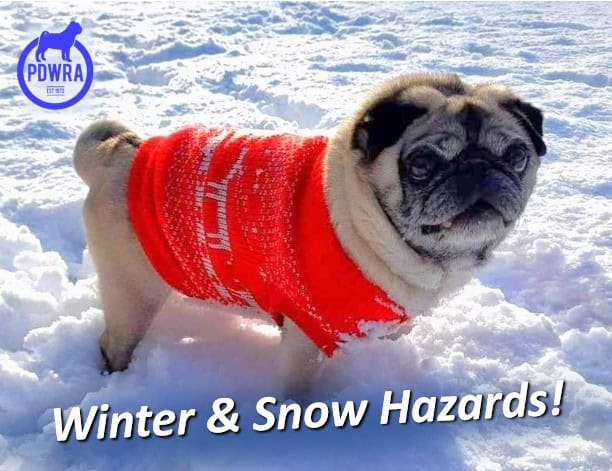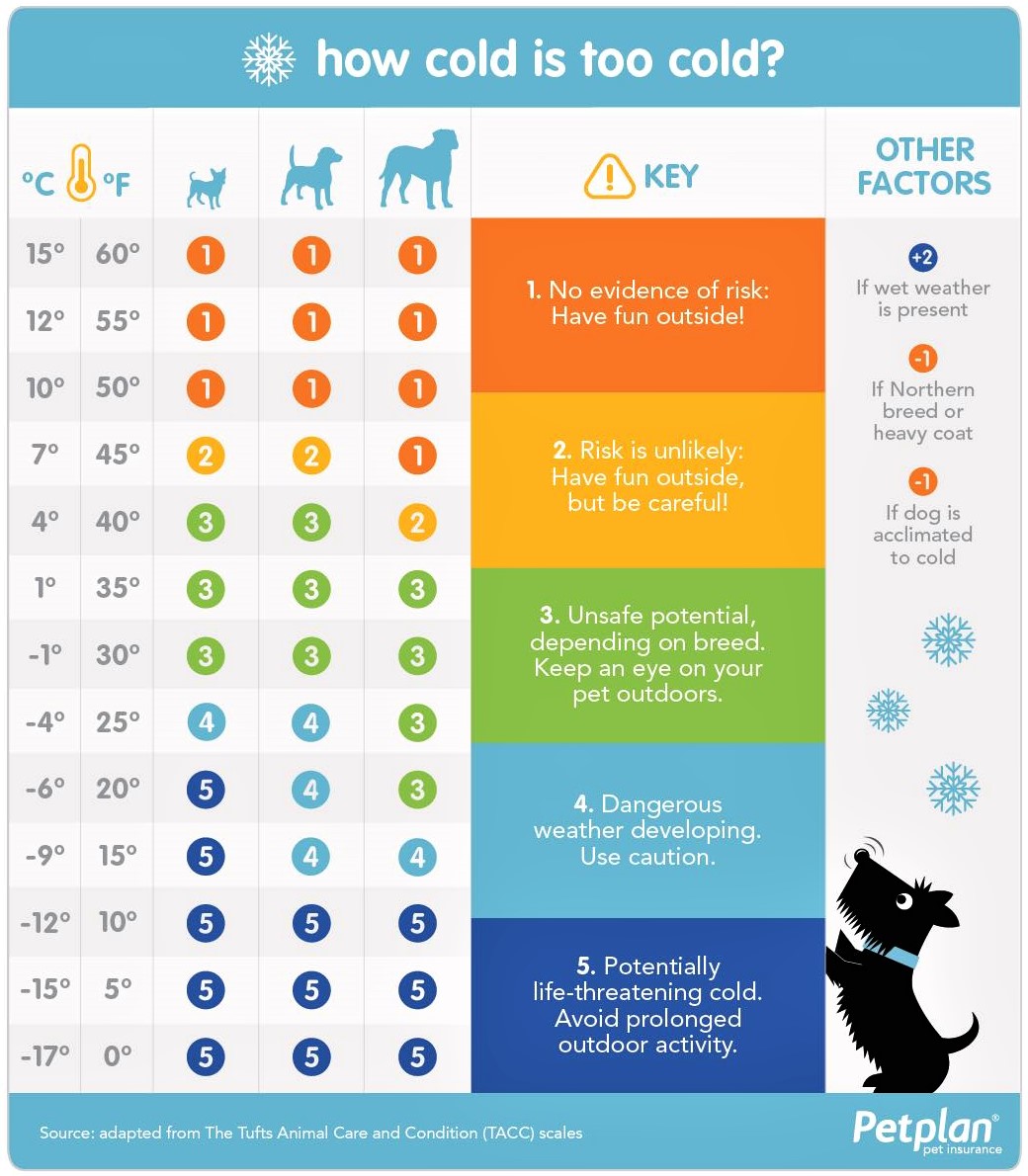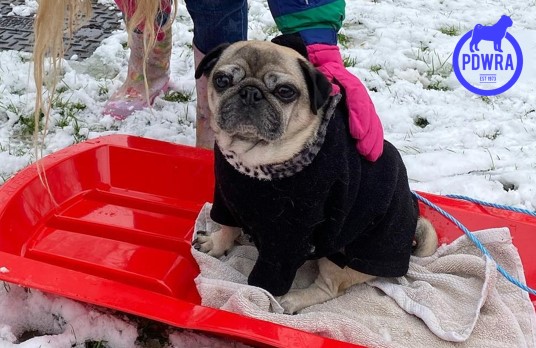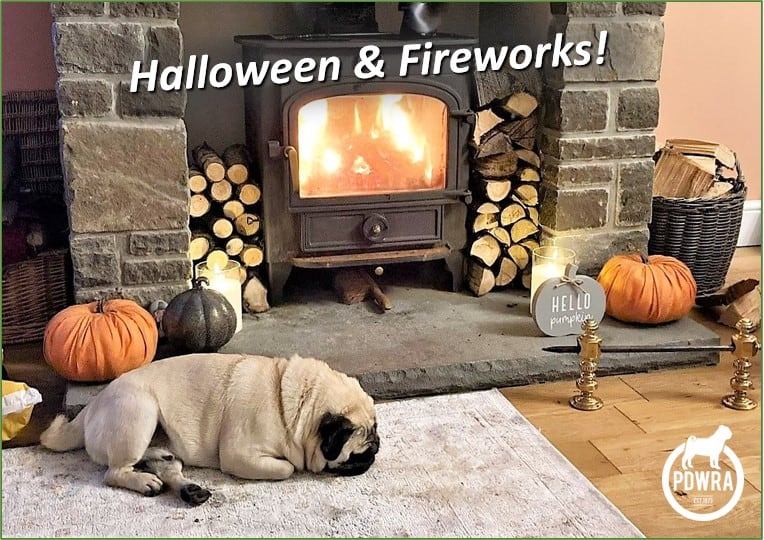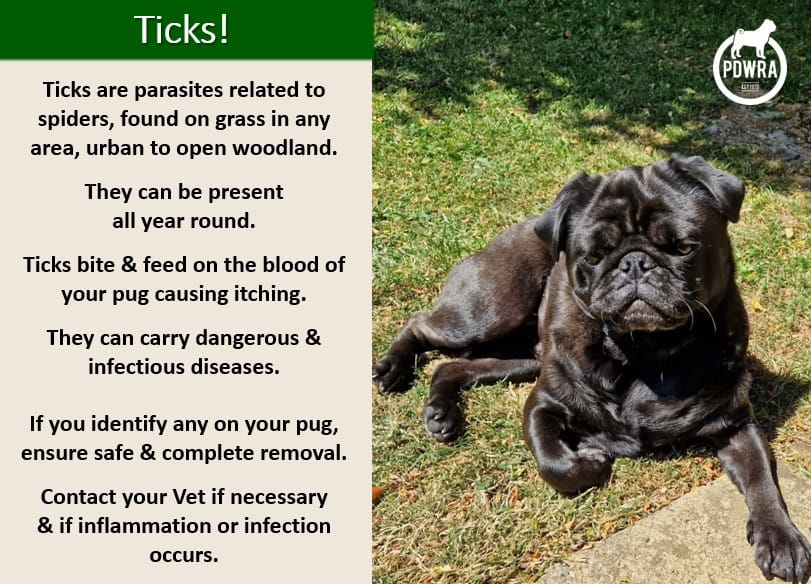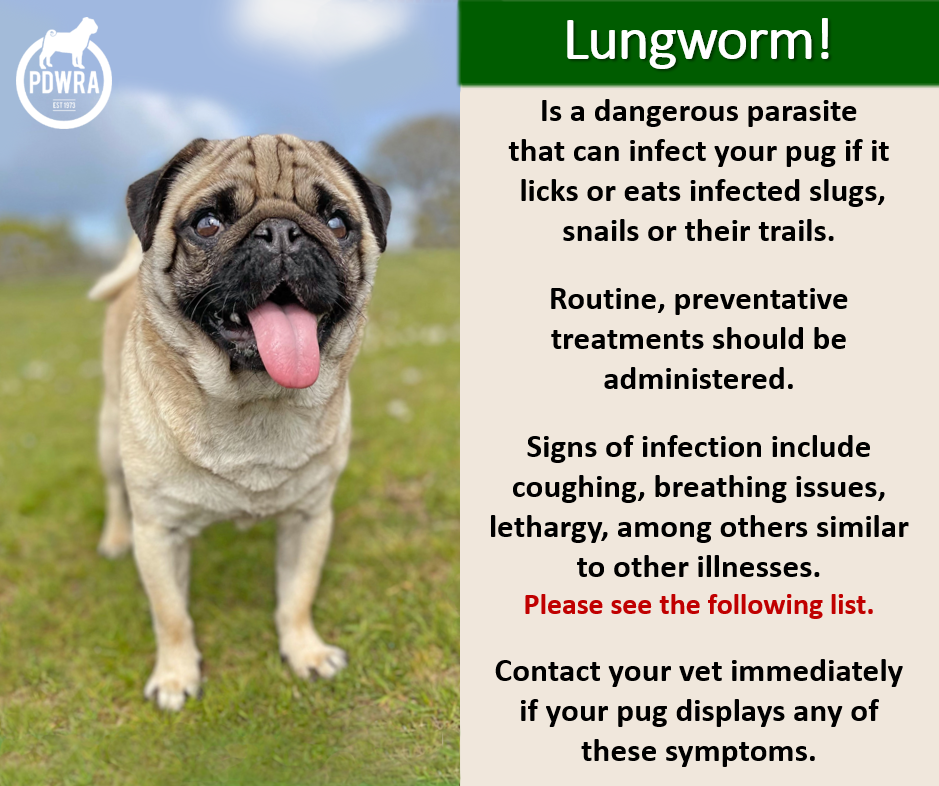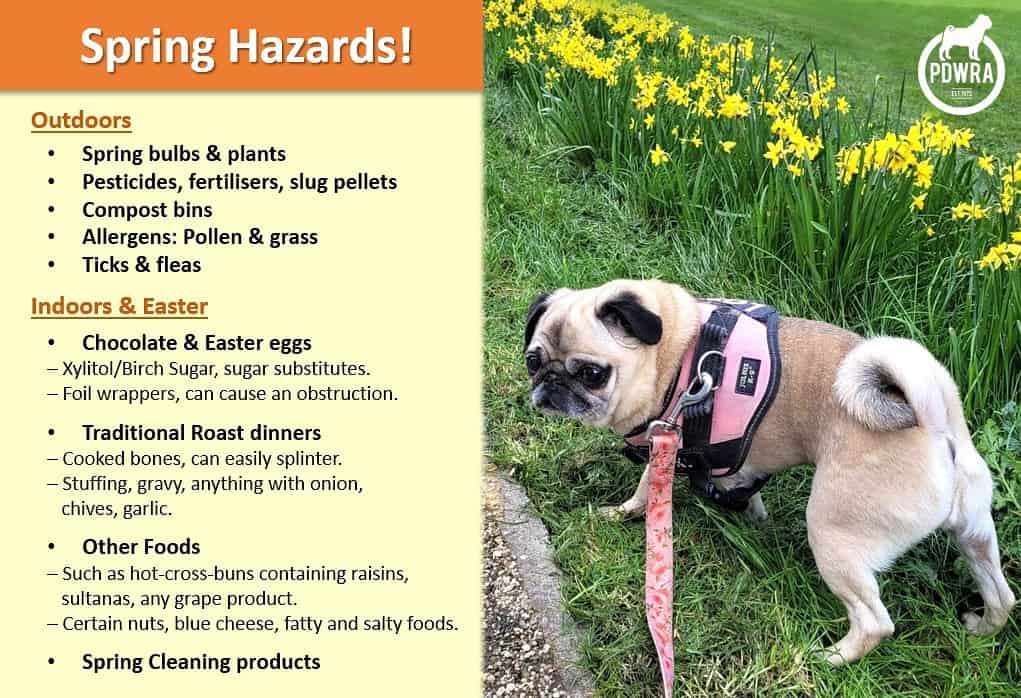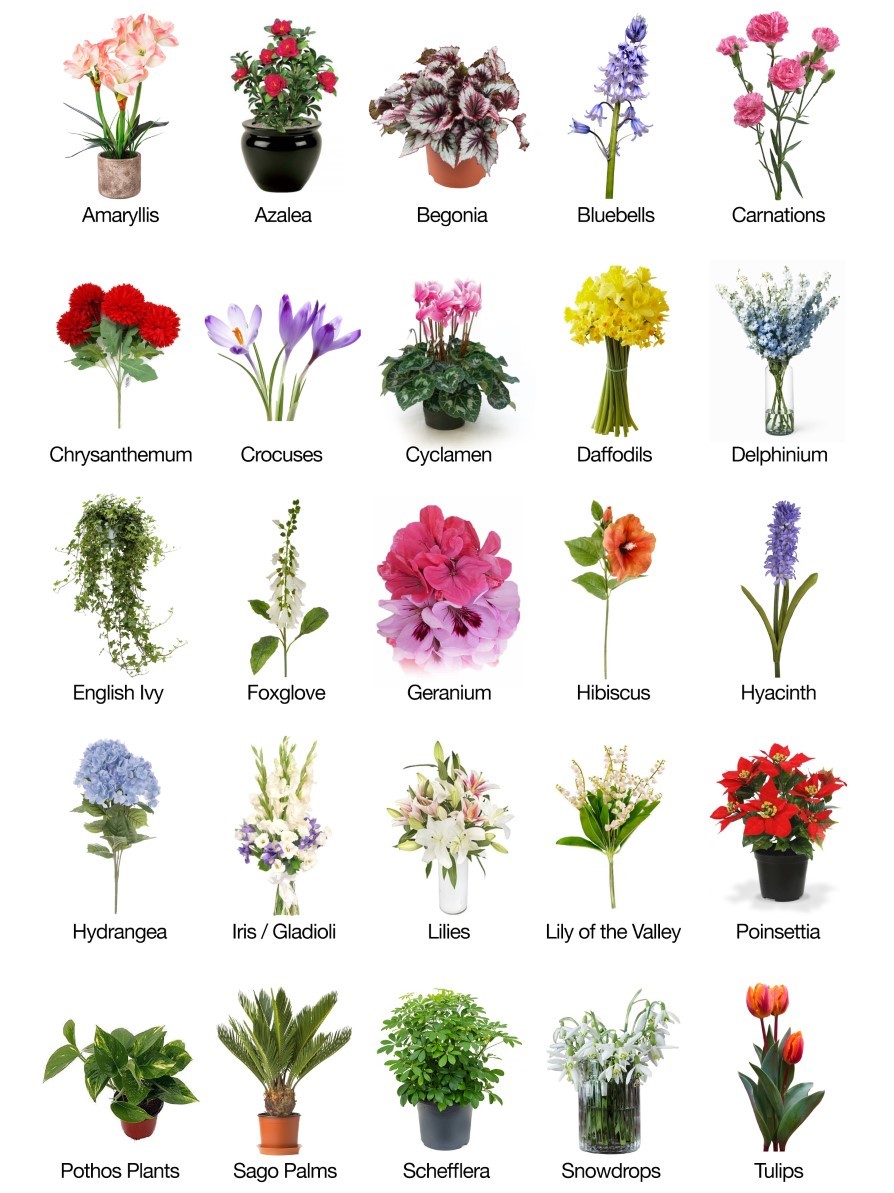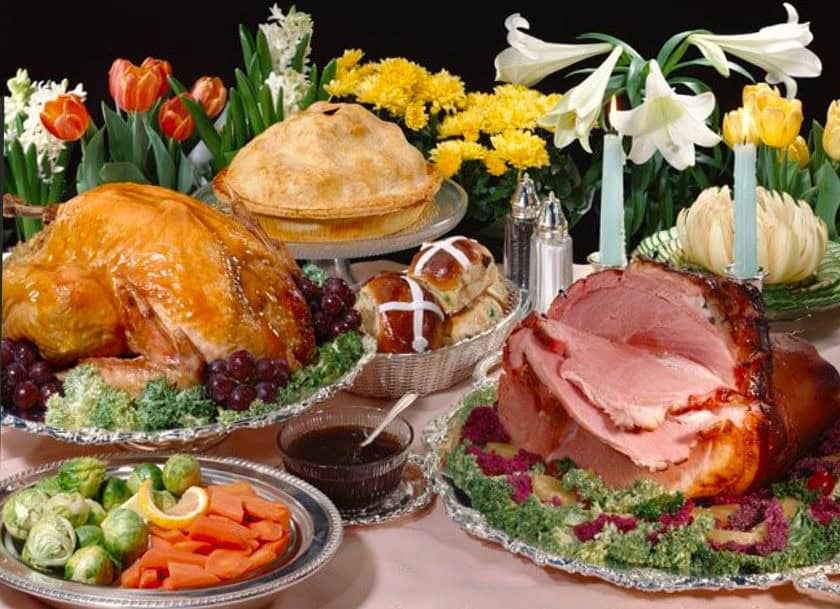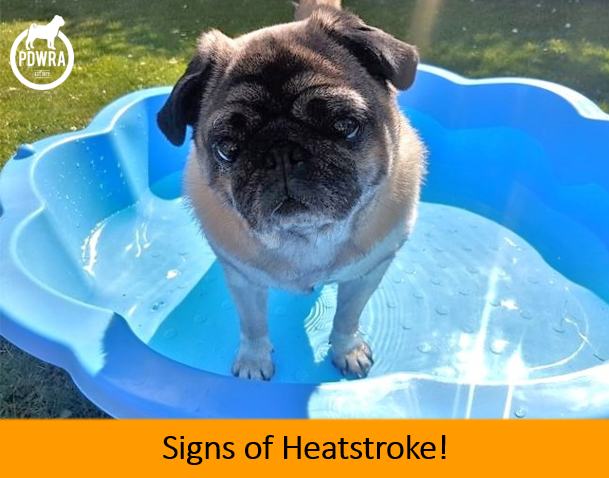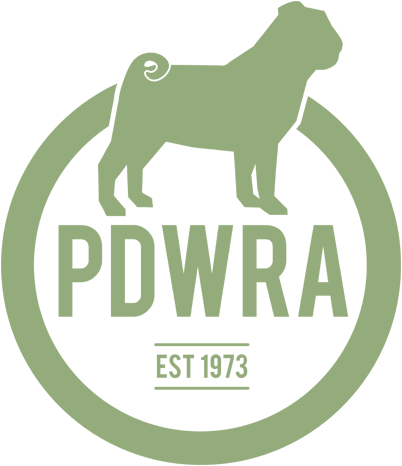
Seasonal Hazards.
Temptation will be indoors and out for our pugs, so please be vigilant and know what to prepare for, or avoid, to enjoy the various times of the year, safely:
******
WINTER.
Temperatures are dropping and we’ve seen our first snow of the year, so here’s a reminder of all the season’s potential hazards & precautions you can take to make it an enjoyable one!
Winter & Snow Hazards! | The Pug Dog Welfare & Rescue Association
– Beware of salt on roads & paths which can burn their paw pads.
Check once home, and rinse them if necessary.
– Ice and snow can stick to the fur between pads and build up. Not just uncomfortable for your pug, it increases their risk of frostbite.
If they raise their paws, stop walking or whine it could be a sign that their paws are too cold.
– Also, beware of thin ice & frozen puddles.
– Take care when using antifreeze. It tastes sweet so is tempting for dogs but can be lethal if ingested.
– Watch for dogs drinking out of puddles too as they may be tainted with antifreeze chemicals from spills or leaks.
– When cold, a dog’s body will limit blood flow to their extremities (paws, tail, ears etc.), in order to keep their vital organs functioning safely.
This can put their extremities at risk of being damaged by the cold.
– It’s a good idea to get a warm coat for them, essential when it’s very cold but still safe to go outdoors. See temperature chart below.
Ensure it fits well & is flexible so that it doesn’t prevent them moving normally, either by being too tight or too loose.
– If your dog starts shivering, or appears very tired (lethargic), then get them home as soon as possible.
If they continue to seem unwell, contact your vet immediately.
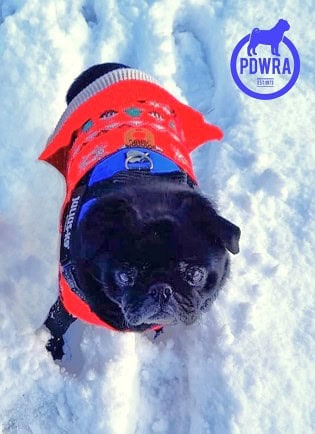
Here are some Body-care tips:
– Additional to well-fitting warm outerwear, use paw protection if needed, this could be in the form of dog dry skin creams/ balms, or doggy booties.
– Inspect pug paws regularly to check for cracked pads, broken nails or snow/salt damage.
– Brush your pug’s coat regularly to distribute natural oils to the skin and prevent dry patches.
– If it’s windy, don’t forget to protect their eyes, by extra lubrication gels and especially if on a beach, where wind & sand can scratch them causing lasting damage without urgent treatment.
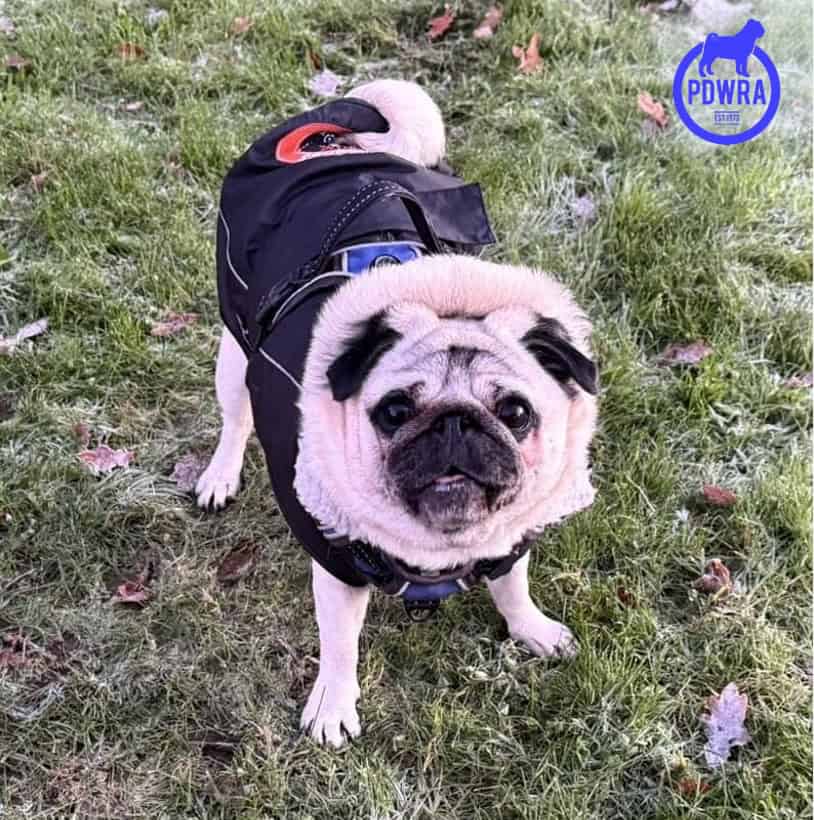
Here’s a very good guide specific to temperatures when considering conditions for your dog’s walks:
If ever your pug shows signs of hypothermia, which includes, shivering, drowsiness, confusion, clumsiness, pale gums and loss of consciousness or collapse, get your pet immediately out of the cold & contact your vet straight away.
Dry & warm them up gently, never intensely & too quickly as this can be dangerous.
For further information, please see:
Hypothermia in Pets – PDSA
For further information about storm advice: Keeping pets safe in stormy weather – PDSA
******
AUTUMN.
Autumn hazards can be quite serious, so be sure to watch out for the following, to keep our pugs safe outdoors:
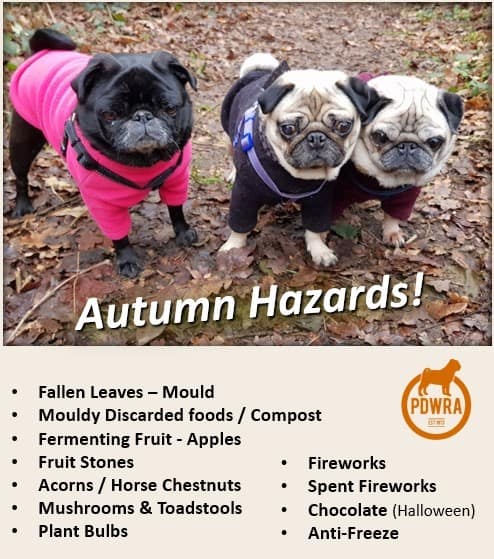
Autumn Hazards are on their way! | The Pug Dog Welfare & Rescue Association
- Not only do piles of leaves hide what’s beneath them, they can develop bacteria and mould. If your dog ingests these it can lead to gastrointestinal upset.
- Likewise, mouldy discarded foods can contain lots of different toxins, in particular on dairy products, bread or nuts, which can cause dogs to quickly develop muscle tremors or seizures.
- Fermenting fruit, produces a natural alcoholic compound, which is toxic. If your dog eats such fruit, they are likely to suffer from sickness and diarrhoea, and also, may run the risk of having a toxic reaction to the natural alcohol produced by the fruit as part of its fermentation process.
- Fruit stones, cherries, damsons, plumbs or similar if chewed produce cyanide, if swallowed whole, can cause choking or obstruction.
- Acorns or horse-chestnuts (conkers) can lead to sickness and diarrhoea, and if ingested in large quantities are toxic. They are also a choke hazard or can potentially become lodged in the gut causing a blockage, so make sure that your dog doesn’t eat any!
- Dangerous mushrooms can be hard to identify, where signs of poisoning vary dramatically from stomach upset or blood in the stools to neurological effects such as hallucinations or fits, kidney or liver failure. The symptoms may present very suddenly or be delayed by days.
- Poisoning from spring bulbs like daffodils, tulips or crocus are most likely to occur from being eaten in autumn when they are planted, or when they begin to flower in spring.
Further useful advice can be found at:
Poisons in your garden | Dog health | Kennel Club (thekennelclub.org.uk)
Are acorns bad for dogs?| The Kennel Club
Pet Care in Autumn – PDSA
Also, to be considered:
- Fireworks. Additionally to Bonfire night, there are Diwali celebrations and Halloween parties.
In advance, you may want to consider:
-
- Desensitising your pets to noise: Playing fireworks noises quietly using sound CDs, while rewarding calm behaviour, can help them become accustomed to the noise. Play them in the run up to firework season, to help them see they need not be afraid.
- Anxiety relief products: Anxiety relieving products containing pheromones are an effective way to help your pet stay calm, also comforting jackets are like a big hug! There are so many products around so do research them.
For their comfort and security when fireworks are expected:
- Walk your dogs before it’s dark.
- Feed your dogs before fireworks are expected to begin, as they may be too stressed to eat later on.
- Make sure your house or garden is escape-proof, as they can bolt or go missing. (Check their microchip registration is up-to-date!)
- Keep windows and curtains closed, the lights on and turn the TV on to play music to help drown out the noise.
- Create a safe, cosy place for your dog to settle before it gets dark. Dogs enjoy cosy dens.
- Keep them entertained to take their mind off the noise. Comforting and reassuring them.
- Do not leave them alone at home or elsewhere.
- For Halloween, take precautions to make trick/treaters aware that you are not participating, so that the doorbell isn’t rung throughout the evening. We all know how our dogs react to that!
- Fireworks. They contain hazardous chemicals which can be poisonous to your dog. Initially these poisons can cause vomiting, diarrhoea, tummy pain and/or bloody stools.
-
- More severe effects may include seizures and the chemicals may also affect your dog’s breathing, kidneys and liver.
- Don’t let your dog into your garden unsupervised around Bonfire Night and the other seasonal celebrations, without checking first that none have fallen into your garden.
- Chocolate sales will rise around Halloween for trick or treat-ing, but remember it contains the stimulant called theobromine, highly poisonous to dogs.
- Please don’t leave chocolate unattended or within reach as the aroma will tempt them to find them.
- The amount of theobromine differs depending on the type of chocolate, dark chocolate having the most in it. Theobromine mainly affects the heart, central nervous system and kidneys.
- Signs can occur from 4 to 24 hours following ingestion where you may see vomiting, diarrhoea, restlessness, hyperactivity, rapid breathing, muscle tension, lack of coordination, increased heart rate and possibly seizure.
When it gets colder:
- Antifreeze, (ethylene glycol) is the worst of all the chemical spills, which can also leak from a car’s radiator.
- Ingestion is very dangerous. It is sweet tasting and very palatable to dogs, though even a relatively small quantity can cause serious kidney damage or be fatal.
- The first signs of intoxication can be that your dog appears ‘drunk’. If you know your dog has ingested ethylene glycol or you have any concerns, contact your vet without delay.
- The prognosis is poorer the longer it takes to initiate treatment.
So please be extra vigilant, and if you suspect your dog has been affected in any way. Contact your vet as soon as possible to discuss symptoms.
******
Also, for that time of the year here are our reminders & tips for keeping our pugs safe & happy during Fireworks season!: Fireworks & Your Pugs. | The Pug Dog Welfare & Rescue Association
Further Advice & tips can be found at:
- Helping your dog cope with fireworks | Dogs Trust
- Supporting your dog during and after fireworks | Dogs Trust
- Is chocolate bad for dogs? | The Kennel Club
******
TICKS.
Ticks are another potential hazard, being present ALL YEAR ROUND not just during warm-weather. If you’re walking your dog or holidaying in new, particularly grassy areas, you may want to be extra vigilant regarding these parasites.
******
LUNGWORM.
As we’ve had very wet weather for most of last year and it continues, slugs and snails are more active, which increases the risk of them passing on the lungworm parasite to our pugs. There are many slugs and snails around so be extra vigilant when out walking your dog and always pick up and safely dispose of your dog’s faeces.
Signs of lungworm infection include:
- Breathing difficulties
- Coughing (especially bringing up blood)
- Lethargy
- Poor blood clotting/persistent bleeding
- General sickness
- Circling
- Vomiting
- Diarrhoea
- Stomach and back pain
- Poor appetite
- Weight loss
- Seizures
- Behaviour changes (depression)
Consult your vet as soon as possible if your dog becomes unwell. Remember, not every snail or slug carries the disease and lungworm’s geographical limitations means infection is relatively uncommon, but when it does appear, it is potentially extremely serious, often a chronic disease, lasting months, even years.
Killing lungworm is relatively simple, ensuring your routine (monthly), preventative anti-parasite treatments administered to your pug are appropriate.
Once diagnosed and treated, most dogs make a full recovery and, like all diseases, the key to successful treatment is taking action early.
For more information about lungworm & its treatment, please see:
https://www.pdsa.org.uk/pet-help-and-advice/pet-health-hub/conditions/lungworm-in-dogs
******
SPRING.
Spring brings drier, brighter and warmer days along with its temptations indoors and out. So as usual we need to be vigilant, on behalf of our pugs!
Please see this article with plenty of useful details and reminders of the array of potential hazards to prepare for, that could prove very important to enjoy the season.
https://pugwelfare-rescue.org.uk/spring-hazards-temptations/
******
Many different plants commonly found in the home, gardens and outdoor areas can make your dog ill. Some of these are highly poisonous, while others may only cause a mild tummy upset.
Incidents of poisoning from spring bulbs are most likely to occur from dogs eating the bulbs in spring when they begin to flower or autumn when they are planted.
You can find a comprehensive list of poisonous plants at: Poisons in your garden | Dog health | Kennel Club (thekennelclub.org.uk)
******
With Easter and Bank Holiday celebrations, often comes feasts and treats, which can lead to overeating and digestive issues for pugs. Be mindful of the types, and amounts, of food your pug consumes to prevent obesity and gastrointestinal problems. There are many food items listed in the article that are hazardous to our pugs.
If you suspect your dog might have ingested anything that is appearing to make them ill, contact your vet immediately.
For more information, please see: Poisons | Dog health | The Kennel Club
******
SUMMERTIME & HOT WEATHER.
Here is our regular advice & tips for keeping our pugs, so sensitive to heat, cool, comfortable, and safe.
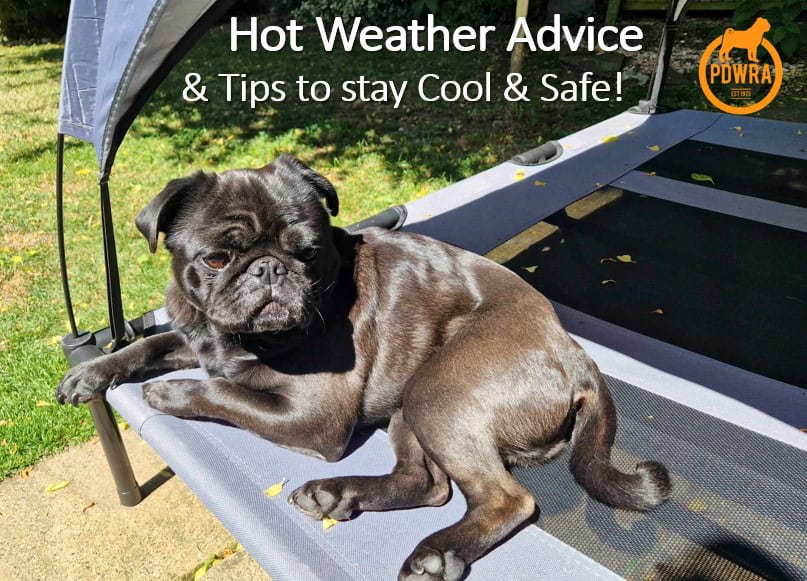
- Make sure your pug has constant access to fresh water – day and night.
- fresh fruit, chilled or frozen, make ideal refreshing & healthy treats to help keep them hydrated.
- Make sure your pug has constant access to shade and cool surfaces.
- Remember to move sources of shade as the sun moves around gardens.
- Provide cooling jackets and shallow paddling pools to enable your pug to cool down, and remember that carpets do not help pugs cool down, so provide cooling mats to help your pug cool down indoors and swap them for a spare cool mat regularly to ensure they are cool.
- DO NOT rely on fans alone to cool your pugs down as they are not as effective on pets as they are on us.
- Plan your walks
- Walk your pug in the early morning or late in the evening if the temperatures are cool enough and try to stick to shaded areas.
- If the mornings/evenings are still warm – DO NOT walk your pug!
- Particularly if they are overweight, have health issues, are elderly or very young.

- The Seven Second Test
- Tarmac, pavements even artificial grass can get very hot in the sun – hold your hand on it for 7 seconds. If it’s too hot for your hand, it’s too hot for their paws. DO NOT walk your pug as they could burn their paw pads.
Temperature guide for deciding whether it’s safe to walk your pug/s.
- Below 12°C: Perfect walking weather! Your dog will be comfortable and ready to explore.
- 12-19°C: Safe for most dogs, but keep an eye out for signs of overheating if they’re running around a lot.
- 20-23°C: Start to take precautions. Stick to shaded areas, keep walks short, and bring water.
- 24-26°C: This is risky territory. Only take your dog out if it’s absolutely necessary, make it a quick, shady stroll, early in the morning or later in the evening.
- Above 27°C: It’s too dangerous to walk your dog. Stay indoors or let them relax in a cool, shaded area instead.
Each dog is individual & different to others, so always monitor how yours reacts to the heat and adjust their activity accordingly.
Here is a quick-glance, useful guide, regarding temperatures & risks.
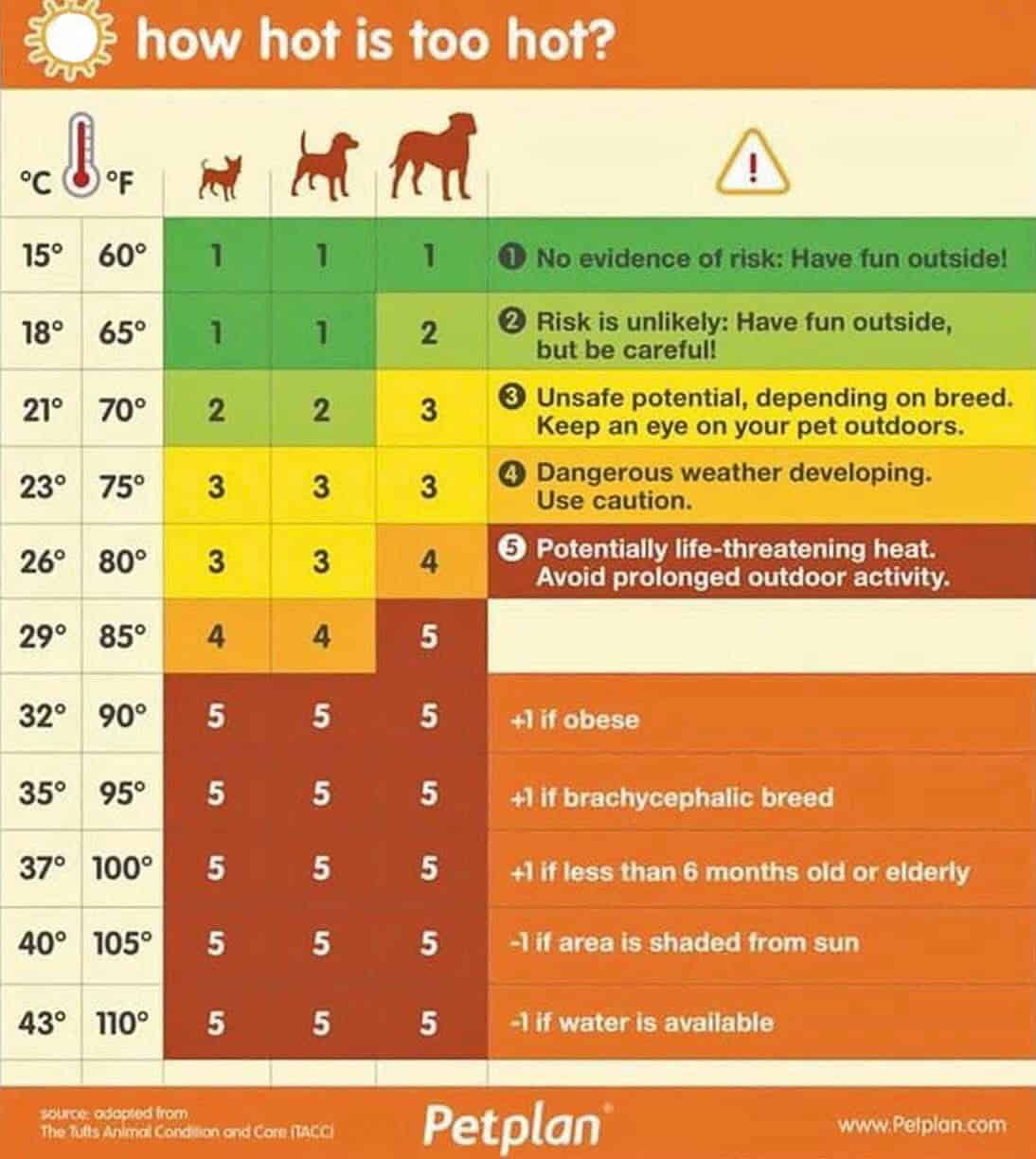
******

NEVER leave your pug in a car on a hot day – even if it’s just for a couple of minutes, or even if you have left the windows open. Pugs can die in hot cars in minutes!!!
******
HEATSTROKE.
This is an extremely dangerous condition that can develop if a dog gets too hot. Pugs are particularly sensitive to over-heating which can be extremely dangerous for them, with limited ability to sweat and little or no nose/muzzle they will struggle to lose heat through panting alone, more-so if they are overweight or have other health problems. Very old and very young dogs are most at risk.
Normal body temperature for a dog tends to be between 38-39°C (100.4-102.2°F), this can rise a bit if they are unwell with a fever.
Heat exhaustion typically occurs when a dog’s body temperature rises above 39.4°C then they are at risk of heatstroke, which can cause seizures, organ damage, internal bleeding, coma and be critical for them.
Nearly three quarters of heatstroke cases develop while playing and exercising though it can also be caused by simply sitting somewhere too warm, or being trapped somewhere hot, such as a car, conservatory or room without proper ventilation.
Therefore, it is important to know what to look for, where HEATSTROKE is concerned. Signs can include:
-
-
- Excessive panting
- Difficulty breathing (fast, heavy, noisy)
- Increased heart rate
- Drooling / Foaming at the mouth
- Diarrhoea (may be bloody)
- Vomiting
- Weakness / Collapse
- Stupor / confusion
- Drowsy & uncoordinated
- Lethargy (low energy)
- Shaking
- Seizures
- Unconsciousness
-
If your pug experiences any of these symptoms, please seek the advice of your Vet immediately.
Heatstroke is more dangerous the longer it lasts, so the quicker your pug is cooled down and treated by a vet, the better their chance of a full recovery.
In an EMERGENCY:
1) Immediately move your pug to a cooler area, a cool, darkened room or into the shade
2) Cool them down straight away
- Calmly and quickly use cold water (water from the cold tap is fine) over their whole body, or use wet cloths or towels
- Be extremely careful they don’t inhale any water by keeping it away from their nose and mouth
- Offer them a drink of cold water but don’t force them to drink if they don’t want to. Wet their tongue with water instead.
- Create a breeze by opening doors and windows or turning a fan/air-conditioning on
- Put them on top of a cold wet towel.
- Don’t cover them with a wet towel or cuddle them as this will make them even hotter
3) Go to your Vet as soon as possible
- Transport them in an air-conditioned car or with the windows open (ensuring they can’t get out)
- If possible take someone with you to keep cooling them down while you travel
For more advice about heatstroke from PDSA including first-aid, please see:
https://www.pdsa.org.uk/pet-help-and-advice/pet-health-hub/conditions/heatstroke-in-dogs
******
Other pug health articles can be found at:
Pug Health & Wellbeing | The Pug Dog Welfare & Rescue Association

